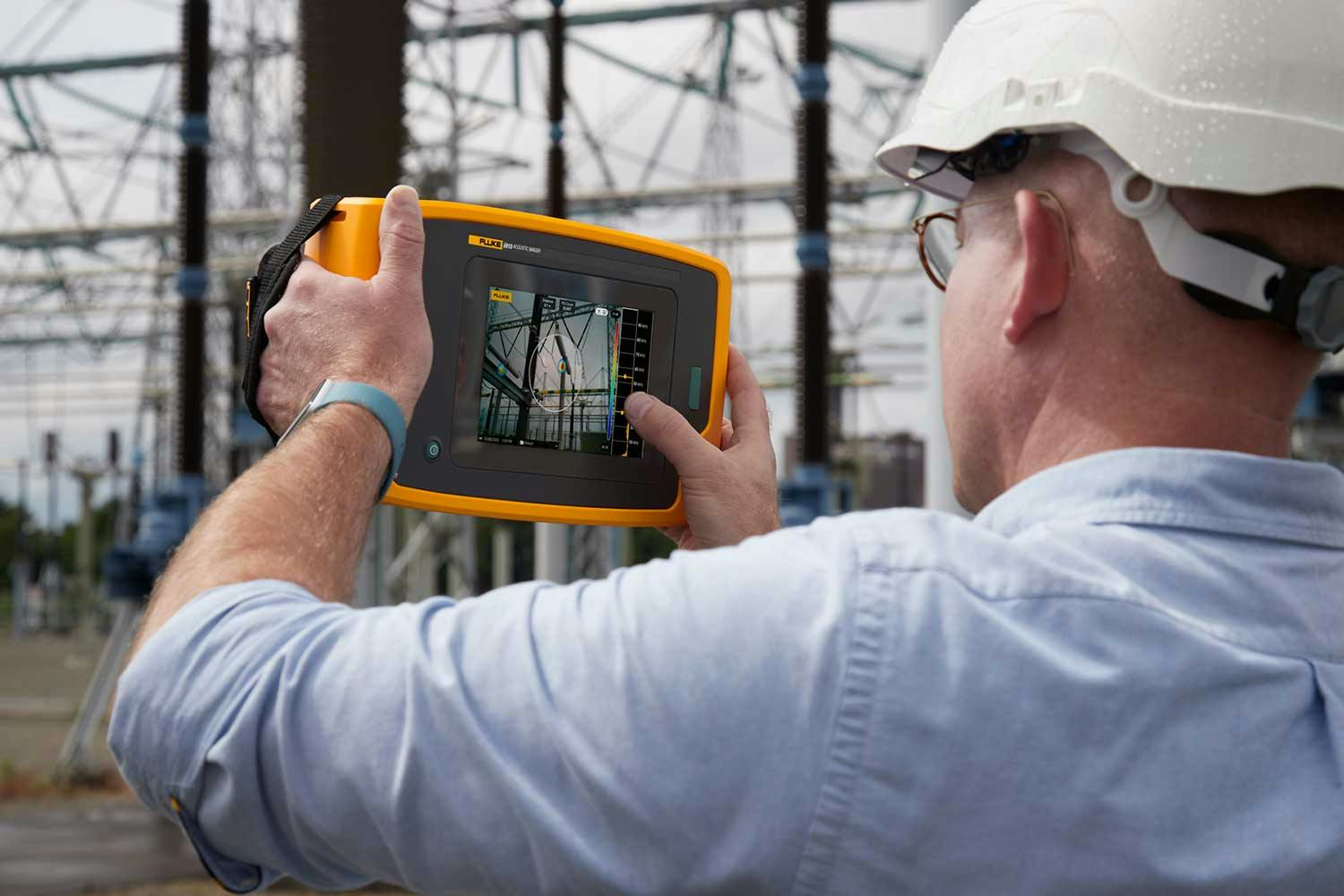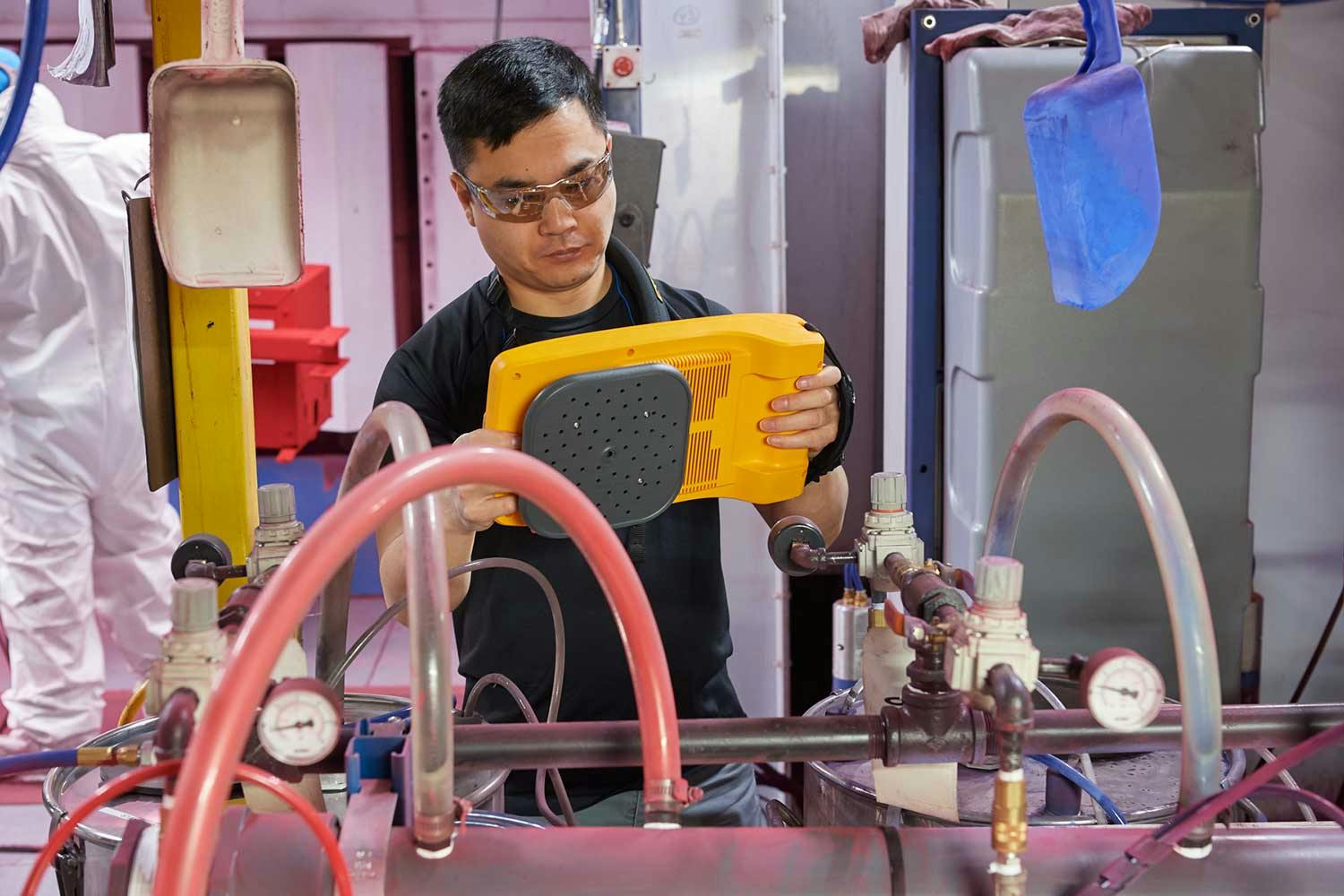Compressed Air, Gas and Vacuum Leaks
Compressed air, gas and vacuum systems are the backbone of industrial plants and facilities. They are used to run machines, tools, robotics, lasers, product handling systems, and much more.
Yet many compressed air, gas and vacuum systems are compromised by wear and poor maintenance practices, which contribute to the greatest waste of all – ever-present leaks. These leaks can be hidden behind machines, at connection points, overhead in fixed pipes, or in cracked pipes and worn hoses. The waste adds up quickly and can even lead to downtime.
According to the U.S. Department of Energy, a single 1/8” (3mm) leak in a compressed air line can cost upwards of $2,500 a year. The U.S. Department of Energy estimates an average U.S. plant that has not been well maintained, can waste 20 % of its total compressed air production capacity through leaks. The New Zealand government, as part of its Target Sustainability project, estimates that system leaks can account for 30 to 50 % of a compressed air system’s capacity.
Air leaks cause pressure loss in the system, and in order to make up for this pressure loss, operators often overcompensate by buying a larger compressor than is needed, which incurs significant capital costs along with increased energy costs.
System leaks can also cause air dependent equipment to fail due to low system pressure. This can lead to production delays, unplanned downtime, quality issues, decreased service life, and increased maintenance due to unnecessary cycling of compressors.
Solutions
The best way to take control of air & vacuum leaks in your facility is to establish a preventative maintenance routine. Regular inspections of your facility are essential to identify leaks and fix them early before they cause problems.
Traditional leak detection methods are time consuming, inefficient, and extremely limited. Many companies still opt for the soapy water or close listening methods, both of which are slow and require production to shut down during the inspection, resulting in significant downtime losses.
Using Traditional Ultrasonic Tools:
- Involves a trained inspector with an educated ear listening to identify miniscule noises and determine whether they are originating from leaks.
- Requires experience, training, and certifications.
- Involves point by point meticulous inspections, and the use of Snoop Tests (soapy bubbles) to verify detected leaks.
- Manual tagging is required to track leaks.
The Fluke ii905 Sonic Industrial Imager and ii915 Precision Acoustic Imager can detect leaks up to 10 times faster than these traditional methods and do not require any specialist training or certifications to use.
Using Fluke ii905 and ii915 Acoustic Imagers:
- Turn on the imager
- Scan a large area
- See the leak on the screen
- Save and tag the result on the device
It really is that easy.
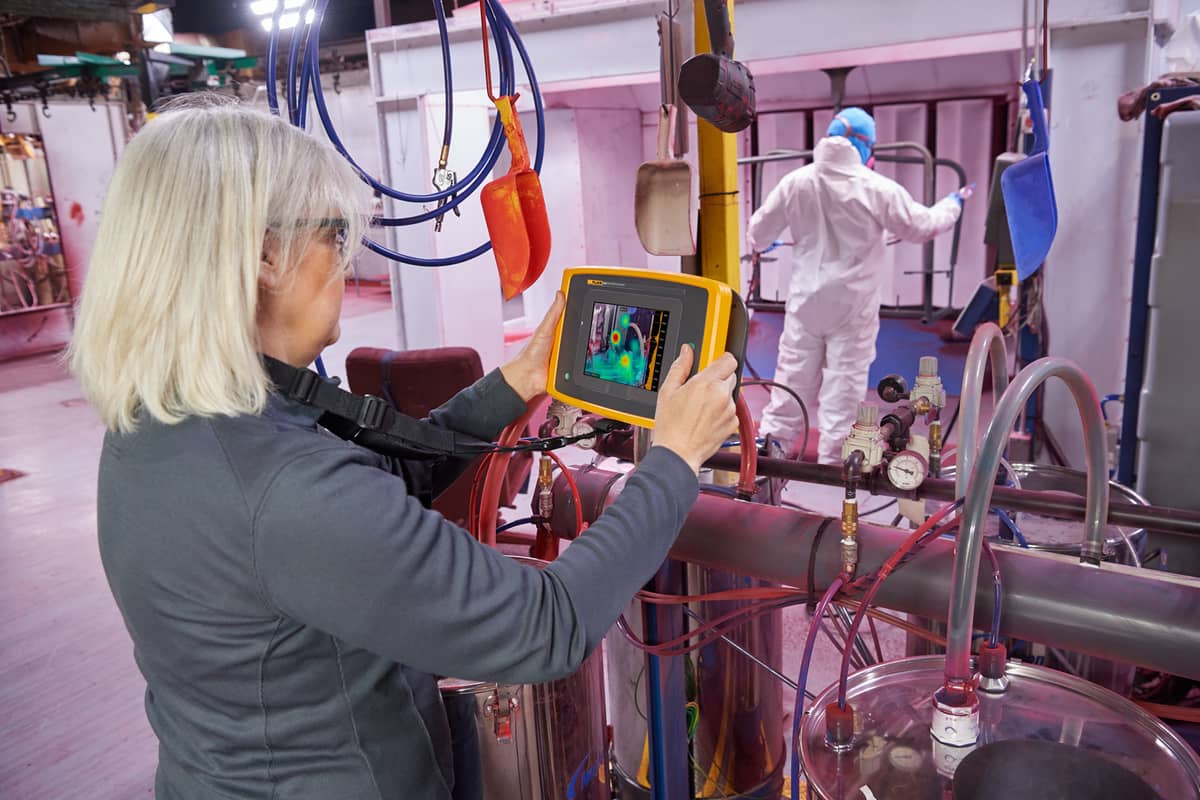
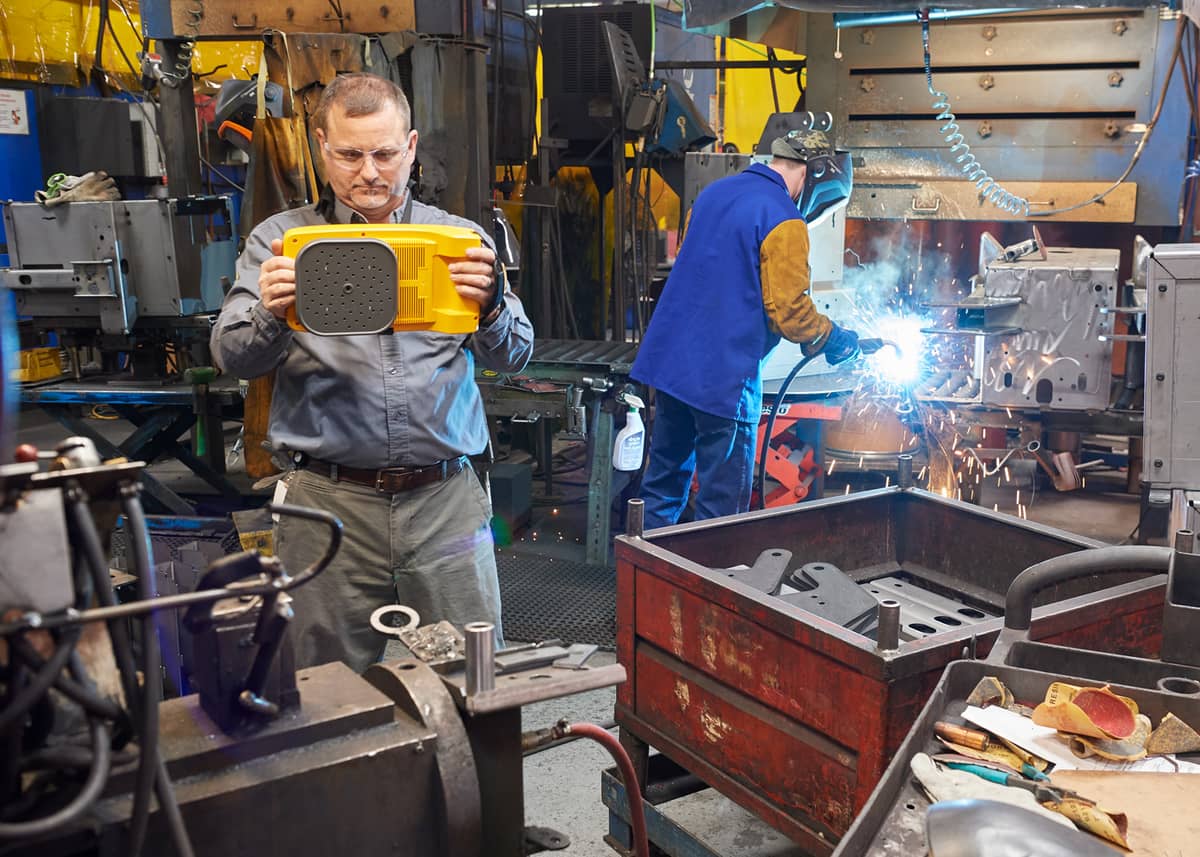
Inspect during operations
Finding compressed air line leaks is easy – if you can hear them. Most people can’t hear compressed air leaks in a completely quiet environment, let alone in a loud manufacturing plant. Even if you think you hear a leak, you will need to verify it, which means you need to be able to access it.
With the Fluke ii905 and ii915 it is possible to conduct entire leak inspections during ongoing operations. The device’s inbuilt array of sensitive microphones has been designed from the ground up to be able to isolate the distinct frequencies of compressed air leaks and filter out all extraneous production noises. With the Fluke ii905/ii915 in your maintenance arsenal, equipment downtime is a thing of the past.
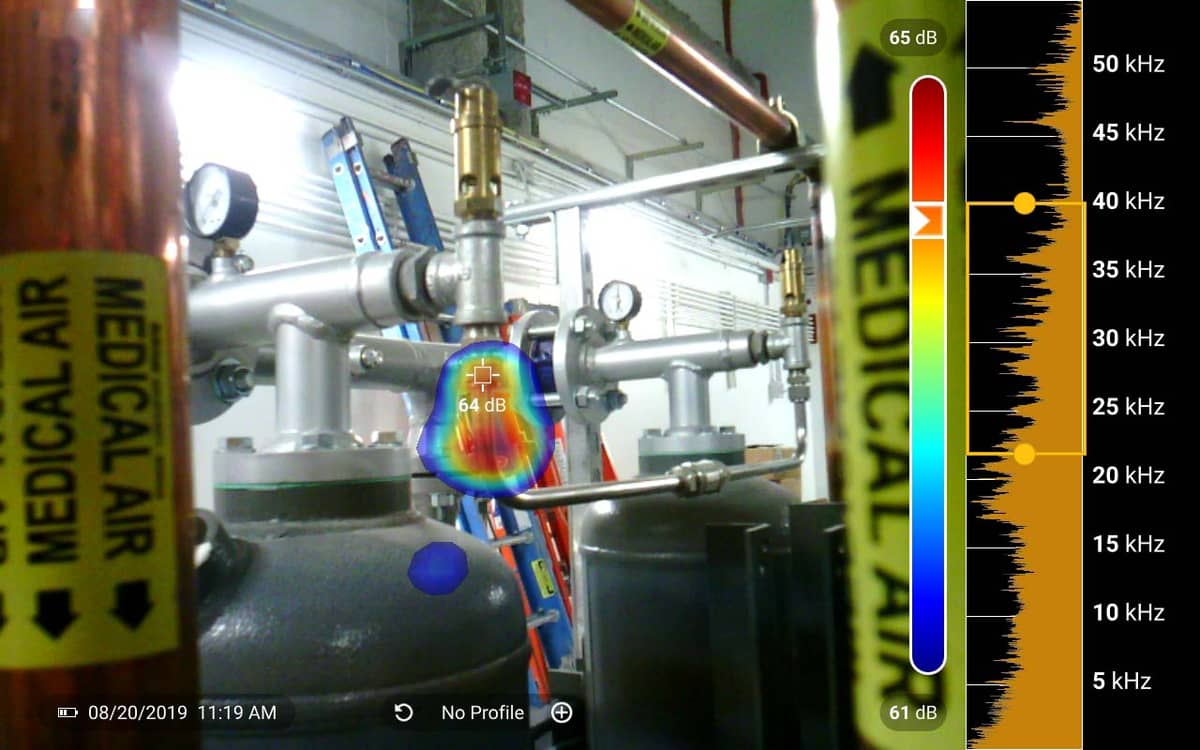
Comprehensive inspections
With a detection distance of up to 70 metres (ii905) or 120 metres (ii915), it has never been easier to locate miniscule leaks. In facilities with overhead pipes and large machinery, the source of leaks can often be found in hard-to-reach or unsafe areas. In many cases these leaks remain hidden for extended periods of time, causing unseen losses much longer than they should. These problems simply do not exist with the Fluke ii905/ii915, which use a visual SoundMap to instantly show you where leaks are occurring at a glance no matter where they might be, from the safety of the ground. You can even find multiple leaks on screen at a time.
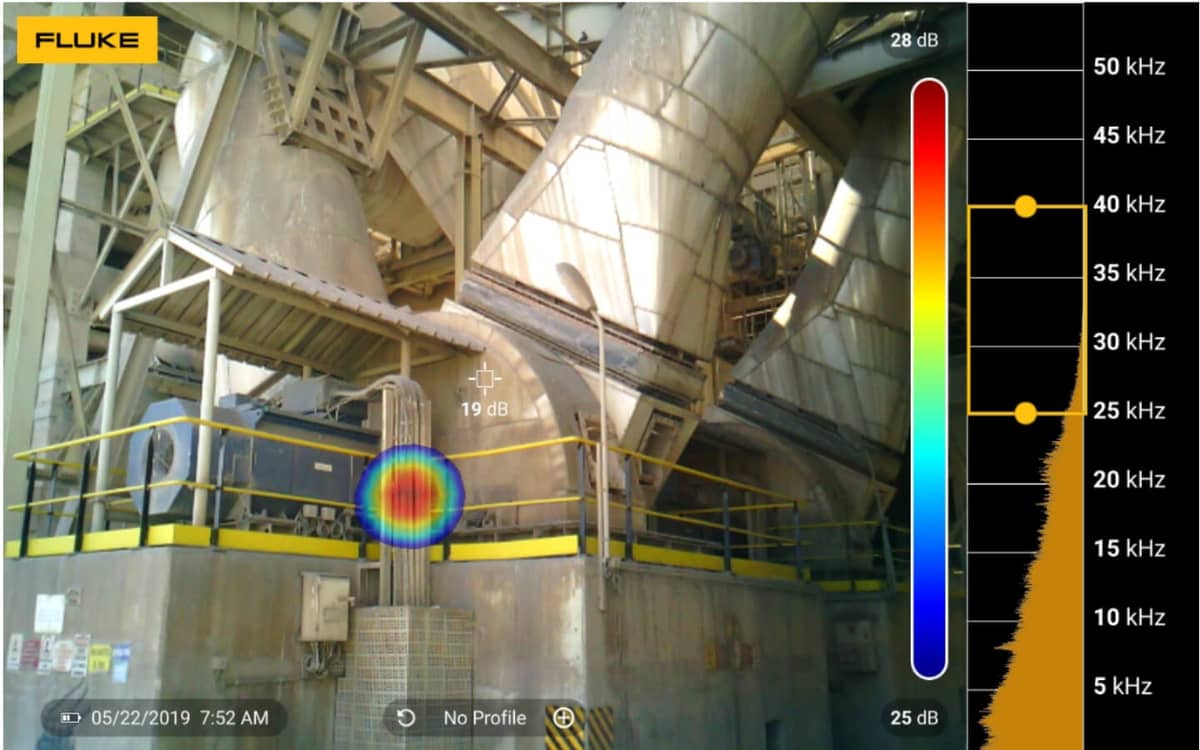
See the value
We all know that unchecked leaks result in unseen costs, however it’s an arduous process to quantify and report on them. With the Fluke ii905’s and ii915’s LeakQ mode and report generator the data you capture with the device can be instantly turned into a report analysing the size of detected leaks and their associated cost estimations. Now you can immediately see the value of each maintenance routine conducted.
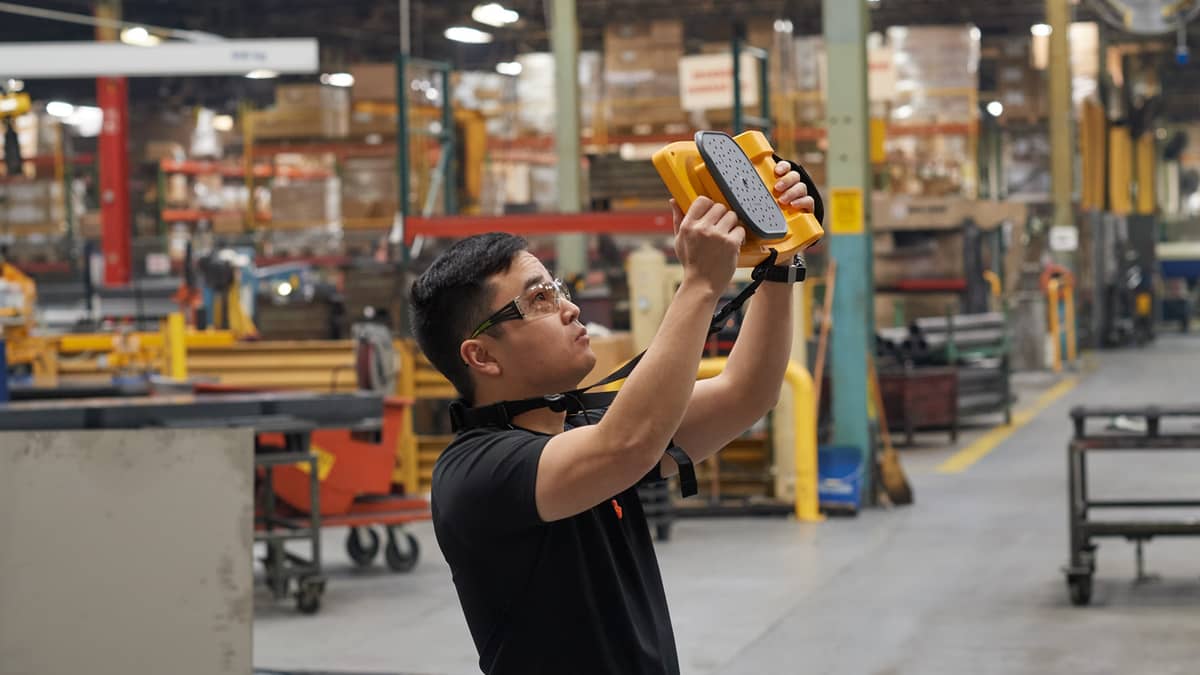
Anyone can use it
What you see is what you get. If it looks like the Fluke ii905 and ii915 are easy to use, that’s because they are. In mere minutes any member of your maintenance team will be able to pick up this device and start locating leaks – no training required. Check it out for yourself in the 360° Virtual Demo.
